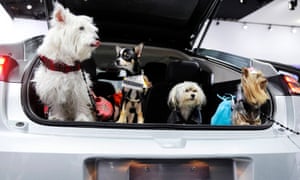One of the biggest problems most first-time filmmakers face is that of planning for – and providing – the right resources for the all-important shoot. You’ve written the script, or found someone to write it for you. You’ve found a cast, and you’ve arranged a day (or days) on which to shoot. And you’ve raised a budget that will allow you to make a film without also serving up a significant dent to your personal bank balance.
But now what? Part of your budget will be put down to equipment costs – either renting or purchasing the hardware needed to turn the inputs of light and sound into a movie. There’s a bewildering array of equipment available in both the amateur and professional filmmaking markets, to hire or to buy, and choosing the right kit for your shoot can be stressful, confusing and, when done wrong, a disaster for both your film and your budget. Just as important is your crew: filming will prove just as slow and frustrating with an overload of extraneous team members as it will if there are too few to keep the ball rolling.
This handy cut-out-and-keep (over several fridges or in a filing cabinet or something) guide will take you through three levels of equipment and crew that should be present on your film set. Starting with the very, very basic needs of what is essentially a no-budget shoot, we’ll progress up until we have makings of a professional indie film set-up. We've even included handy links to Amazon, where you can find some of the coolest and most useful pieces of kit and gadgets!
One thing this guide does not account for are the pre- and post- production costs, such as ADR, colour correction, editing etc, which should always be taken into account in your budget. It also ignores the salaries of cast and crew. In time-honoured independent film fashion, everyone on these fictional shoots of mine is working for free, and they love it. It's not ideal – you definitely want to be paying people to keep this industry alive – but it is where many of us start out. Plus, paying people is good for you too - “pay peanuts, get monkeys”.
A word of warning: as with most arts how-to articles, this article is as much an opinion piece as it is a guide. Please treat it as such.
No, I have no money at all, not even a little bit
(OK, I have a little bit)
The Kit
Visuals
• A Middle-range DSLR Camera. Most shoot 1080p, will go to 6400 ISO, are comparatively really cheap and can double up as useful stills cameras.
• Proper digital storage for the film! It’s amazing how few people think of this until the first day of the shoot when the camera stops recording after 20 seconds. Get multiple Class 10 or over SD cards with respectable amounts of memory (16 GB at least). Better still, opt for a portable hard drive that will plug into your camera.
• A Prime Lens. Do it properly. Zooming in is sinful. Stop being lazy and move the camera closer instead. Go for something like a 50mm, which sees more or less a similar view to what the human eye sees, so is relatable and good for all sorts of shots.
• A Tripod / Monopod. Essential for steadying your shots, whether you have the space or not.
• A home-made bounce board or DYI Lighting kit. Bounce boards are spectacularly simple to make: a wooden / plastic frame with an opaque white surface stretched across it will do. A DIY lighting kit, similarly, can consist of nothing more than a few house lamps – the important thing is being able to have the choice to use it, and not being stuck with whatever nature throws at you.
Audio
• A Directional Microphone. Also known as a Shotgun Mic, this piece of equipment could potentially save your entire film if used correctly. Getting the sound capture right is one of the most important aspects of filmmaking.
• Additional microphone equipment. This means extension XLR cables and adaptors. DSLRs don’t take XLR, so you’ll either need to find an adaptor for your camera’s microphone input (normally a mini-Jack).
Lastly, there is a vital component of any film set that is scientifically proven to make the final product look more smooth and professional: a dolly. Granted, dollies and track kits are expensive even to rent, but who says you need to rent or buy one? As with our lighting kit earlier, it’s fairly easy to achieve a smooth tracking shot using stuff you pick up here and there for free. Anything with wheels (bicycle, skateboard, wheelchair) can be used, so long as the surface it’s rolling on is nice and flat. And have you seen the Pico-Dolly? It’s a genius, cheap solution to all your smooth-shot needs.
You can even try something without wheels: Elliot Grove once achieved one of his favourite-ever shots by dragging a camera on a leather jacket across a marble floor.
The Crew
• Director / Cameraman / DoP – A dazzlingly multi-tasking role, but folding the director’s job in with the cinematographer’s and the camera operator’s is a good way of keeping the amount of people on the set down, as well as the budget. It also allows the artistic vision and decisions to stay with one person, making things simpler in your first shoot.
• Producer – Many small-scale productions (especially if the film being shot is a short) will combine the Director and Producer into one role. Although this is possible, you’ll probably find that on the day organizing all the actors, equipment and locations is a bit overwhelming. Let the producer worry about organization, you worry about the film.
• Sound / Lighting / General handyman – While the Director and Producer are busy with the artistic vision and organization of the shoot, this member of the team will provide vital support by acting as a runner, boom mic operator, backup cameraman, script supervisor, gaffer, and all those other myriad jobs that make moviemaking possible.
• Actors (up to 5) – As aforementioned, it is important that you keep the number of unnecessary people on your set to a minimum. For your first project, pick or write a script with as few characters as possible. Remember, being an actor on-set is mostly a boring, irritating experience, especially when you’re not being paid or fed, so reduce the amount of people you’re going to be looking after for a more relaxed experience.
Oh, look, found some money
The Kit
Visuals
• High-range DSLR / Low-range Film camera - If you’ve got a bit of money to spare, go for a higher-quality DSLR, or look at buying or renting a camera exclusively for film such as a C300, Blackmagic, etc…
• Storage – A portable hard-drive, compatible with your camera’s memory output.
• Monitor – Simply a screen linked to your camera, so you can watch what is being filmed live without having to crane into the viewfinder. Very useful if you’re not shooting yourself, and very cheap and easy to set up and find. Remember, you’ll have to get the right cables too!
• 50mm Prime lens – Again, your main and most useful lens, appropriate for all sorts of styles and shots.
• Telephoto lens – The most popular length is the 70-200mm. This lens will allow you to become a bit more experimental with camera placement, such as with outdoor shots and flattening the background.
• A small professional Lighting kit featuring at least one bounce board, a couple of fill lights, a pick or two, gels and stands.
• A Tripod.
• A Shoulder rig. Since you have the budget, invest in a good piece of equipment for shooting on the move. You’re still not quite in proper Steadicam territory, but a Fig Rig or entry-level counterweight system could be in your price range and very useful.
Audio
With a higher budget, you can begin to look at different ways of mic-ing actors up. Although none should be used as a permanent alternative to a good shotgun microphone, body mics and ambient mics are useful for capturing intimate sound in difficult scenes or the general aural atmosphere of a location. The external device is always preferable to connecting the microphone directly to the camera, as it will provide a much better sound quality and can be carried around by the sound man, avoiding cable mix-ups and difficult set-ups.
Again, now we’ve taken a step up the budget ladder, we can begin to look at more professional solutions to certain problems. As opposed to a skateboard or a coat being dragged across the floor, you can now afford to hire a small (but still professional) track and dolly kit. This should come with a proper fitting for a tripod (or a even a tripod of it’s own!), a set of tracks and well-made rollers, so that the camera movement is as smooth as possible. The massive advantage of having a track is the ability to lay it down on practically any surface, and still achieve a fluid motion.
The Crew
• Director / DoP - This time around the Director has the massive advantage of not having to operate the camera at the same time, so he can focus solely on directing the actors and camera operator.
• Producer – Tasked with organizing the set on the day of the shoot, as well as all their other pre- and post-production responsibilities.
• Camera operator / 2nd DoP / Lighting technician – Make sure you find someone who knows about photography, camera placement, etc. Not only will they be much easier to work with than someone new to the game, but they will probably come up with ideas on-set that you hadn’t previously considered.
• Sound technician – An experienced sound technician, proficient at both sound capture and boom placement, will make all the difference to your movie soundtrack’s quality.
• General set handyman (Runner) – Someone needs to push the dolly and carry the bags around, as well as take over everyone else’s job when they’re too busy!
• Actors (up to 5)
Take my money, I don't want it
So. Somehow, through begging, borrowing and stealing, depriving your parents of their retirement fund or yourself of food for a few months (or years), you’ve managed to raise a respectable budget for a respectable film shoot.
At this point, you get to become more experimental with your script and directorial choices. Doors which were previously closed – Steadicam technology, cranes, scenes in difficult or far-away locations – are suddenly opened.
The Kit
Visuals
• 2 x Cameras - TWO?! Yes, two. Three is probably an exaggeration, but being able to capture a scene from a couple of different angles simultaneously, or even shoot different scenes at different locations at the same time, is a massive advantage. At this level we can begin to look at proper professional cameras (more for hire than to buy) such as a RED or an Arri Alexa – or even a combination of a pro film camera and a high-range DSLR, Slumdog Millionaire style.
• 2 x external hard drives for storage, to go with our two cameras.
• A full set of Prime lenses, from 11mm through to 200mm or so. This covers practically the whole range and will give your DoP a great set of options to play with – although if you’re planning on using a zoom function for a trick shot (such as a contrazoom), you’ll need to source yourself a Zoom lens.
• Tripods, Monopods, Tracks, a Dolly, and, if you’re feeling really adventurous, a jib or crane.
• A couple of handheld systems – Depending on the script, you might need to have some camera movement that cannot be done on tracks. To do this, you can use a variety of handheld camera systems, from the very cheap and rudimentary Fig Rig to the very expensive, very complicated Steadyicam systems, which often come with their own operators.
• Professional Lighting kit with floods and spots for general lighting effects, picks for highlighting, and gels and stands to get the right colours and angles. Before you buy, however, have a chat with your DoP and see what they suggest.
Audio
• 2 x Shotgun mics with cables, booms, external recorders.
• 1 x ambient mic with cables, stand, external recorder.
• A couple of body mics – Once again, depending on the script. Body mics are mostly used in shots too wide for a microphone on a boom and come with their own set of issues, namely the excess noise caused by the microphone rubbing on clothing.
A good idea would be to speak to your Sound engineer and see what they need. Although the above will do for most shoots, they might need a specialist piece of equipment you haven’t heard of before, or didn’t think to include in the initial list.
The Crew
• Director – purely responsible for the artistic direction of the shoot.
• Assistant Director – This person will be in charge of the people on your set – and since you’re in charge of the crew, who will be busy most of the time, this means they’re in charge of organising the actors. Although we say ‘in charge’, an old phrase about herding cats comes to mind – so be nice to the AD, for they have a horrible job.
• Producer – The higher the budget, the more everyone’s responsibilities start looking like what they’re supposed to be. In this shoot, the producer will be responsible for organizing and scheduling locations, crew and equipment, but has some minions (such as the AD and the handymen) to help him out. The producer should also be responsible for making sure none of the kit gets damaged or lost.
• Camera operator / DoP – One of the most common pieces of advice to first-time feature filmmakers is to hire a proper Director of Photography. They need to be trained and they need to have experience working on film sets before. You can still direct the camera from the monitor (this sounds needy), but their expertise will make the whole process seem a lot easier and more creative.
• Sound engineer – Preferably someone experienced in working in sound recording, with good microphone placement knowledge and a good ear. They do not have to constantly operate the boom themselves, but do have to pay close attention to the type and quality of sound being captured. There are many sound engineers with the skills to do the job well working in the theatre who rarely get a chance to be on a film set, so widen the breadth of your search to outside the film world.
• Lighting technician / Gaffer – Again, you’re better off erring on the side of experience and hiring someone who has worked with lighting systems before; and again, this tends to be a domain in which theatre technicians can be an extremely creative and experienced pool of talent. Many DoPs however, will also know or be used to working with their own Lighting Technicians.
• Runners – Your precious little minions. You will probably have no problem finding some people to do this for free, but bear in mind that on your shoot, their duties will be more than just fetching the tea. They will be assisting not only the Producer, but also the Lighting Technician, the Sound Engineer, the DoP the Actors and, of course, you, not to mention carrying all the kit and pushing the dolly and laying out the tracks and tidying the set and keeping the equipment safe. Precious, precious minions.
• Actors – Clearly, the amount of actors you have on set will depend on the amount of actors featured in the script, but with a higher budget you can afford to take on films with multiple speaking parts, as you have your AD to look after the actors between takes.
There’s one filmmaking post-script that needs to be addressed, and is directed to all three levels of filmmaking above, as well as practically every other level of filmmaking there is. In any shoot, there are two vital components that will make your life as a filmmaker easier by several thousand degrees. The first is a place to store and transport your equipment, preferably at the same time. This means either a car or, even better, a van.
The second is a ready supply of electricity: as you might remember, nearly everything on a film set needs those little blue sparks to function, from the microphones to the camera to your tired, tired brain. Don’t get caught out, scout out your locations first and if there are no/not enough mains plugs bring along a generator.
That brings us to the end of this incredibly long guide. I hope you’ve cut-out-and-kept! And that you haven’t run out of glue or scissor-metal.



































